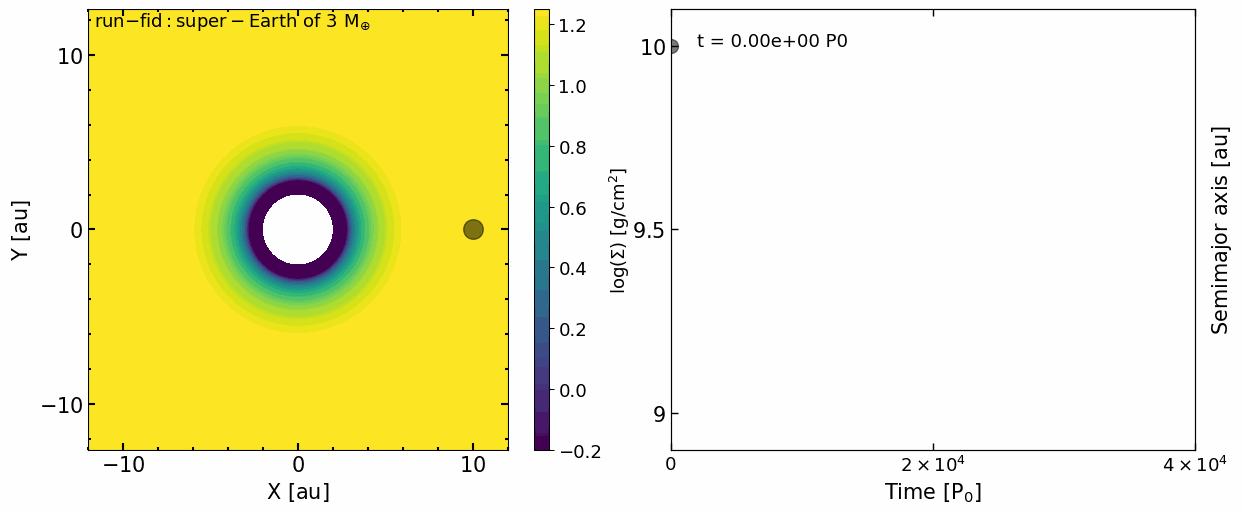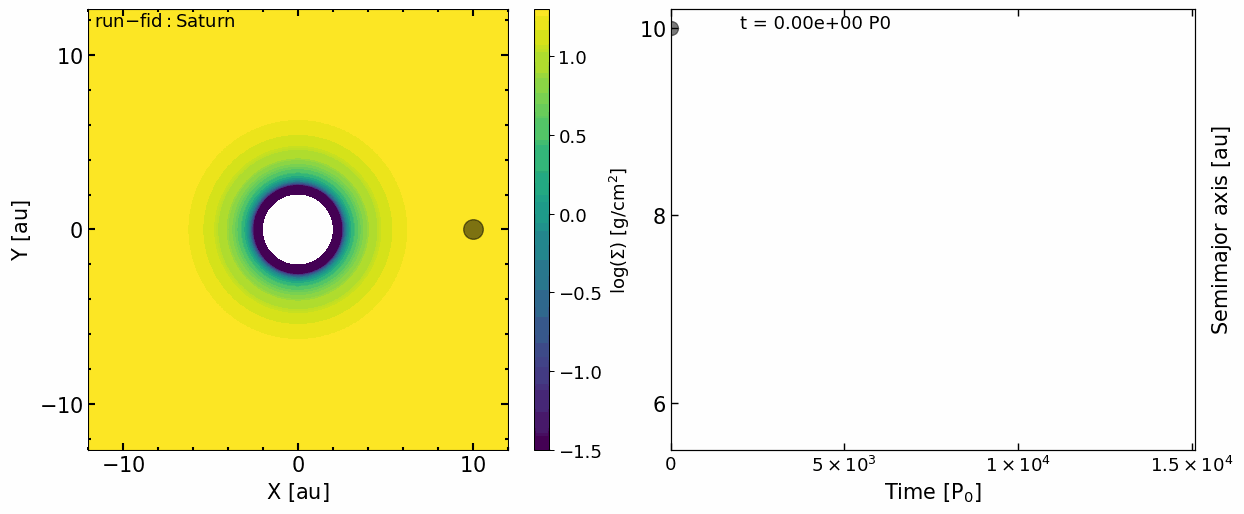How do planets migrate at the edge of the disk, inward or outward? In our previous studies (Liu et al. 2017 A&A, Liu et al. 2025 Nature), we have analytically shown that planets near the inner disk cavity edge can reverse their migration direction, moving outward together with the expanding disk cavity. In this work we present the first 2D hydrodynamical simulations that confirm the existence and viability of rebound outward migration during the inside-out clearing in protoplanetary disks.
This study investigates the orbital migration of a planet located near the truncated edge of protoplanetary disks, induced by X-ray photo-evaporation originating from the central star. The combined effects of turbulent viscous accretion and stellar X-ray photo-evaporation give rise to the formation of a cavity in the central few astronomical units in disks. Once the cavity is formed, the outer disk experiences rapid mass loss and the cavity expands inside out.
We have conducted 2D hydrodynamical simulations of planet-disk interaction for various planet masses and disk properties. The following movies show planets with various masses (e.g., super-Earth of 5 Mearth and Jupiter) rebound outward with the expanding photoevaporative cavity. Our simulations demonstrate that planets up to about Neptune masses experience a strong positive corotation torque along the cavity edge that leads to sustained outward migration -- a phenomenon previously termed rebound migration. Jupiter-mass planets are found to undergo modest outward migration as they cause the residual disk to become eccentric. . See details for Liu et al. 2025, A&A [ADS] [arxiv].

